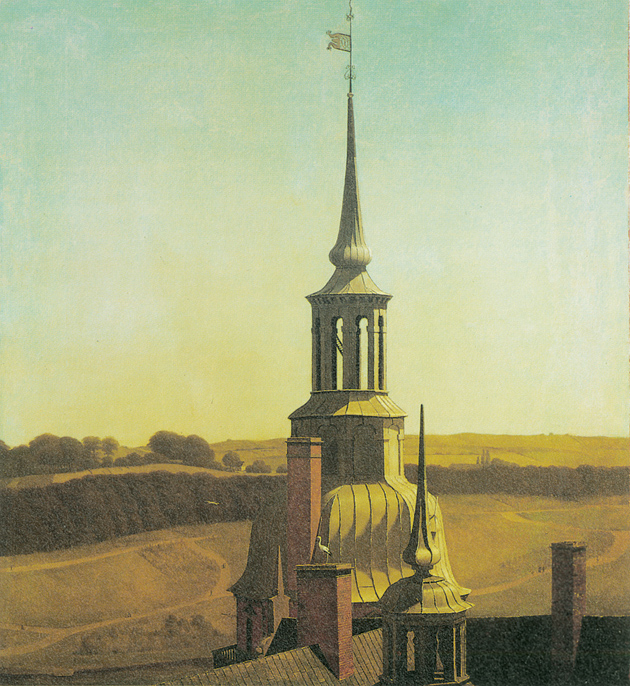The early-nineteenth-century Danish artist Christen Købke wasn’t the first or the last painter to record the subtlest effects of light. But at his current traveling retrospective, which I saw at the National Gallery in London—it is the first extensive show of his work ever held outside his homeland—a viewer could believe that few other artists have shown the way light can settle on the thinnest edges of forms, or glow from within a face, or suffuse atmosphere itself, with quite the same delicacy and firmness. And what makes this Danish painter’s presentation of light particularly distinctive is that it doesn’t feel virtuosic or calculating. He makes it seem, rather, as if there existed a source of light within his pictures and he were gently bringing it to the surface—and as if in the next moment the light we see could lose its intensity.
Købke, who was born in 1810 and died in 1848, was largely forgotten after his death, but he has now long been considered Denmark’s finest painter. At his peak in the 1830s when he was in his twenties, he was something of a perennial student, ever testing himself on how best to structure a given composition or how finely to balance the tones of his colors. In the course of testing himself he made a good many jewel-like and psychologically astute portraits and a number of both sparkling and muted, and in either case tautly composed, views of locations in and around his native Copenhagen.
He painted scenes of people in rooms or outdoors and gave his attention to sites as august as Frederiksborg Castle, an imposing Renaissance palace outside the city, and as lowly as a local seaside lime kiln. He went from subject to subject in seemingly the most unprogrammatic, even serendipitous, way, and his body of work is not large. Yet taken together, his pictures, graced by sudden appearances of enchantingly unexpected colors—whitened pink lake waters, purple skies enveloping red bridges—give a sense that we have encountered a complete little world.
Købke is a figure whose precise importance keeps shifting as he is thought about. On the one hand, he is almost a model of the modest artist. His pictures are often small in size and generally include areas that are so finely detailed that we need and want to get very close. His art certainly has little of the sweep or sense of life being reimagined before our eyes that we encounter in the work of artists whose careers overlapped his in time, whether Ingres, Delacroix, Caspar David Friedrich, Turner, or Constable.
This Issue
July 15, 2010
What Obama Should Have Said to BP






